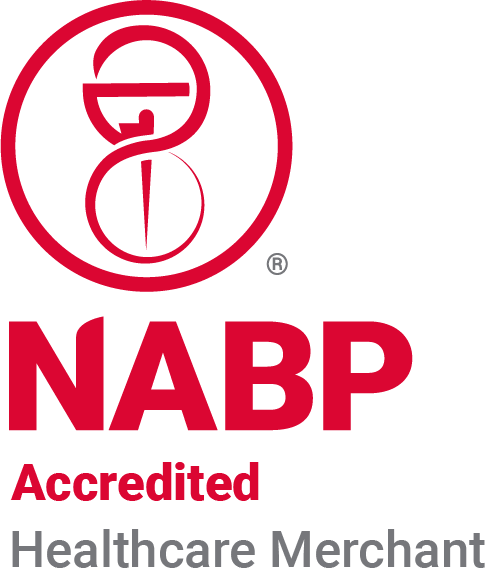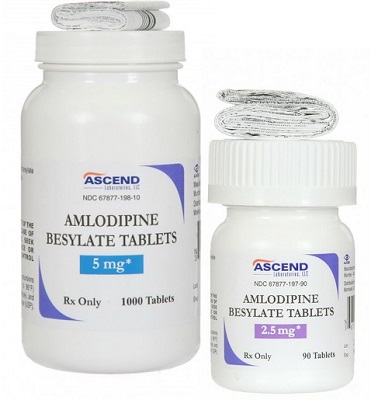Providing Quality & Trust || Clinic Website
Amlodipine
Ascend
$0.15 - $0.23
$0.15 Each
Detailed Description
Amlodipine
(am-loe-di-peen)
- Description: Calcium Channel Blocker
- Other Names forthis Medication: Norvasc®
- Common Dosage Forms: Veterinary: None.
What is Amlodipine?
Amlodipine is used to treat high blood pressure in cats and, sometimes, in dogs. Very important to not skip doses, as high blood pressure can quickly return. May be given with or without food.
- If your animal vomits or acts sick after receiving the drug on an empty stomach, try giving the next dose with food or a small treat. If vomiting continues, contact your veterinarian.
Side effects are not common in cats but include reduced appetite and low blood pressure, especially early in treatment. - In dogs, over growth of the gums can occur.
- Your animal will need to be seen regularly by your veterinarian to check that the medication is working properly. Do not miss these important follow-up visits.
How is this medication useful?
Amlodipine works on the heart and blood vessels to help lower blood pressure. High blood pressure in animals can cause damage to the kidneys, eyes, and brain.
- The FDA (U.S. Food & Drug Administration)has approved this drug for use in humans, but it is not officially approved for use in animals in the USA.
- The FDA allows veterinarians to prescribe products containing this drug in different species or for other conditions in certain situations.
You and your veterinarian can discuss why this drug is the most appropriate choice.
Uses/Indications:
Oral amlodipine is used to treat hypertension in cats and is considered the drug of choice for managing hypertension. Hypertension in cats is typically secondary to other diseases (eg, acute or chronic kidney disease, cardiomyopathy, hyperthyroidism) and is most often seen in middle-age or geriatric cats. Systemic activation of the renin-angiotensin-aldosterone system (RAAS) does not appear to be a major contributor of hypertension in cats with chronic kidney disease. Cats are often presented with acute clinical signs (eg, blindness, seizures, collapse, disorientation, paresis/paralysis). A cat is considered hypertensive if repeated systolic blood pressure measurements are greater than 160 mm Hg or after a single blood pressure measurement if target organ damage (eg, eyes, heart, brain, kidneys) is present.
Antihypertensive therapy may restore vision in a minority of patients with blindness secondary to hypertension. Amlodipine has been shown to significantly increase plasma renin activity in cats that are azotemic and hypertensive, which is a similar response to that seen in human studies. Target systolic blood pressure values of less than 140 to 150 mm Hg are desired to minimize target organ damage from hypertension. Amlodipine does not appear to reduce mortality in hypertensive cats. In one study evaluating hypertensive cats treated with amlodipine, the mean decrease in systolic blood pressure after 28 days of treatment with amlodipine was 28 mm Hg, but even larger blood pressure reduction (49 mm Hg) has been reported.
Amlodipine therapy typically would be initiated only after an RAAS inhibitor (eg, ACE-inhibitor, angiotensin-receptor blocker) because of the high prevalence of chronic kidney disease in hypertensive dogs. In a retrospective review of dogs with severe hypertension, dogs treated with amlodipine for 1 week had a reduction of blood pressure of 18 mm Hg, as compared with 29 mm Hg when treated with telmisartan and 46 mm Hg when treated with a combination of amlodipine and telmisartan. In a small case series (n = 5 dogs), dogs with an average pretreatment systolic arterial blood pressure (SBP) of 215 mm Hg had their SBP reduced to 180 mm Hg when treated with a combination of amlodipine and benazepril, but SBP was reduced to 142 mm Hg when treatment was changed to amlodipine and telmisartan.
What are the side effects ofthis medication?
Side effects that are not serious include:
- It is not common, but at the beginning of treatment some cats have a reduced appetite or act tired.
Rarely in dogs, an overgrowth of gum tissue. - You don’t have to be overly concerned if you see either of these signs unless they are severe, worsen, or continue to be a problem.
Contact your veterinarian if this happens.
How should this medication be given?
For this medication to work, give it exactly as your veterinarian prescribed. It’s a good idea to always check the prescription label to be sure you are giving the drug correctly.
Amlodipine may be given either with food or on an empty stomach.
- If your animal vomits or acts sick after receiving the drug on an empty stomach, try giving the next dose with food or a small treat.
- If vomiting continues, contact your veterinarian.
Compounded liquid forms of this medication must be measured carefully. Your veterinarian or pharmacist can help by providing special measuring spoons or syringes.
If you have difficulty getting your animal to take the medicine, contact your veterinarian or pharmacist for tips to help dosing and reducing the stress of medication time.
- This medication can be given for various lengths of time.
- Be sure you understand how long the veterinarian wants you to continue giving this medication.
- Prescription refills may be necessary before the therapy will be complete.
Precautions/Warnings:
Amlodipine is contraindicated in patients hypersensitive to it, in cardiogenic shock, or with severe aortic stenosis or severe hepatic failure. Because amlodipine may have slight negative inotropic effects, it should be used cautiously in patients with heart failure. It should also be used cautiously in patients that are at risk for developing hypotension or patients with hepatic disease. Amlodipine use for pulmonary hypertension in dogs is not recommended, as systemic hypotension can occur.
There is concern that using amlodipine alone for treating hypertension in cats with renal disease may expose glomeruli to higher pressures secondary to efferent arteriolar constriction, which is caused by localized increases in renin-angiotensin-aldosterone (RAAS) activity, allowing progressive damage to glomeruli. It is postulated that using an ACE inhibitor with amlodipine may help prevent this occurrence. Although routine use of ACE inhibitors with amlodipine is necessary and beneficial in animals with chronic kidney disease and hypertension, use of ACE inhibitors can be controversial, particularly in cats.

Powered by nopCommerce
This site is running in live payment mode. Real payments will be processed.

